Aluminum 45 Degree Elbow
The 45-degree aluminum elbow is a key connector in ship piping systems, used to change the direction of pipelines, allowing fluid to flow smoothly through complex ship piping layouts. As an indispensable component in shipbuilding and maintenance, the 45-degree aluminum elbow plays a vital role in modern marine engineering with its unique material properties and structural design.
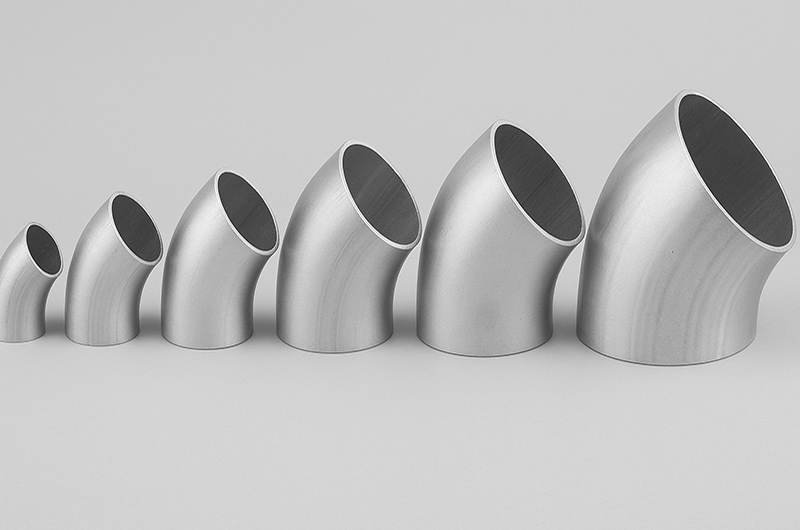
Compared with traditional 90-degree aluminum elbows, the 45-degree elbow provides a smoother turn, reducing fluid resistance. It is especially suitable for ship systems that require precise control of fluid direction and pressure.
With the development of the shipbuilding industry, lightweight and corrosion resistance have become critical factors in selecting ship materials. Due to its lightweight and high-strength characteristics, the aluminum elbow has gradually become one of the preferred materials for ship piping systems. Statistics show that the use of aluminum fittings can reduce the weight of ship piping systems by 30–55%, significantly improving fuel efficiency and overall performance.
As a trusted supplier of aluminum fittings, Haomei Aluminum focuses on providing marine 45-degree aluminum elbows in a variety of mainstream sizes: 2 inch, 3 inch, 4 inch, 5 inch, 6 inch, and customized options such as Cast Aluminum 45 Degree Elbow, meeting installation requirements in different marine systems.
-
2 aluminum 45 degree elbow
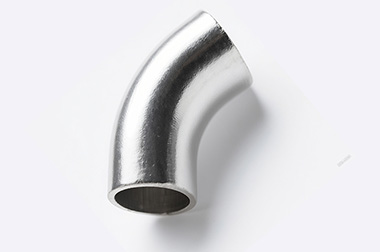
-
3 inch aluminum 45 degree elbow
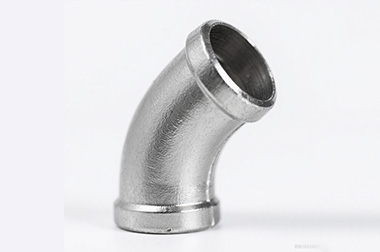
-
4 inch 45 degree aluminum elbow
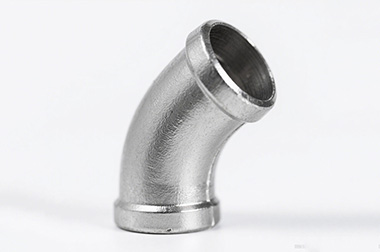
-
5 inch aluminum 45 degree elbow

-
6 aluminum 45 degree elbow
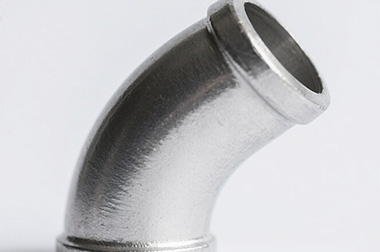
-
cast aluminum 45 degree elbow
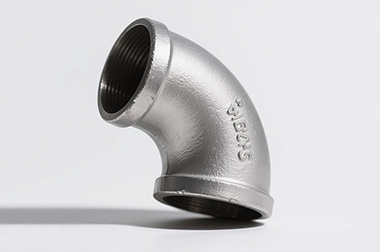
Our aluminum elbows are made from high-quality marine-grade aluminum alloys, offering excellent corrosion resistance, lightweight structure, and reliable mechanical strength. They are widely used in ship engine cooling systems, seawater pipelines, ventilation and exhaust systems. Products are certified by ABS, DNV, CCS, and other classification societies to ensure safety and long-term operation.
Choosing us means choosing high quality, professionalism, and cost-effectiveness. We welcome custom orders based on your drawings or samples, with fast delivery and service worldwide!
In ship design, 45-degree elbows are widely applied — from cooling systems to hydraulic lines, from seawater desalination units to onboard air conditioning systems — covering almost all areas that require pipe direction changes.
Common Specifications of Aluminum 45 Degree Elbow
The specifications of marine 45-degree aluminum elbows are usually defined by nominal diameter (DN), outside diameter (OD), wall thickness, and bending radius. Different application scenarios and pressure requirements call for different specifications of elbows.
Aluminum 45 Degree Elbow Nominal Diameter and Outside Diameter
| Nominal Diameter (DN, mm) | Outside Diameter (OD, mm) | Nominal Diameter (DN, mm) | Outside Diameter (OD, mm) |
| 15 | 22 | 150 | 159 |
| 20 | 27 | 200 | 219 |
| 25 | 34 | 250 | 273 |
| 32 | 42 | 300 | 325 |
| 40 | 48 | 350 | 377 |
| 50 | 60 | 400 | 426 |
| 65 | 76 | 450 | 480 |
| 80 | 89 | 500 | 530 |
| 100 | 108 | 600 | 630 |
Aluminum 45 Degree Elbow Wall Thickness Grades
The wall thickness of marine 45-degree aluminum elbows is usually determined based on pressure ratings. Common wall thickness grades include Sch5s, Sch10s, Sch10, Sch20, Sch30, Sch40s, STD, Sch40, Sch60, Sch80s, XS, Sch80, etc. Among them, the most commonly used are STD (Standard Thickness) and XS (Extra Strong Thickness).
| Nominal Diameter (DN, mm) | Standard Thickness (STD, mm) | Extra Thickness (XS, mm) |
| 15–25 | 2.0–2.5 | 2.5–3.0 |
| 32–50 | 2.5–3.5 | 3.5–4.5 |
| 65–100 | 3.0–4.0 | 4.0–5.5 |
| 125–200 | 4.0–5.0 | 5.0–7.0 |
| 250–400 | 5.0–7.0 | 7.0–10.0 |
Aluminum 45 Degree Elbow Bend Radius
The bend radius of marine 45-degree aluminum elbows typically comes in two standards: long radius and short radius. The long radius elbow has a bending radius equal to 1.5 times the nominal diameter (R = 1.5D), while the short radius elbow has a bending radius equal to 1 times the nominal diameter (R = 1D).
| Nominal Diameter (DN, mm) | Long Radius Elbow (1.5D, mm) | Short Radius Elbow (1D, mm) |
| 15 | 22.5 | 15 |
| 25 | 37.5 | 25 |
| 50 | 75 | 50 |
| 100 | 150 | 100 |
| 150 | 225 | 150 |
| 200 | 300 | 200 |
| 300 | 450 | 300 |
Special Specifications
In addition to the standard specifications mentioned above, marine 45-degree aluminum elbows can also be customized according to special requirements. For example, extra thick wall elbows (XS or XXS) may be needed in high-pressure systems; ultra-short radius elbows may be required in areas with limited space; and special materials may be necessary in low-temperature environments.
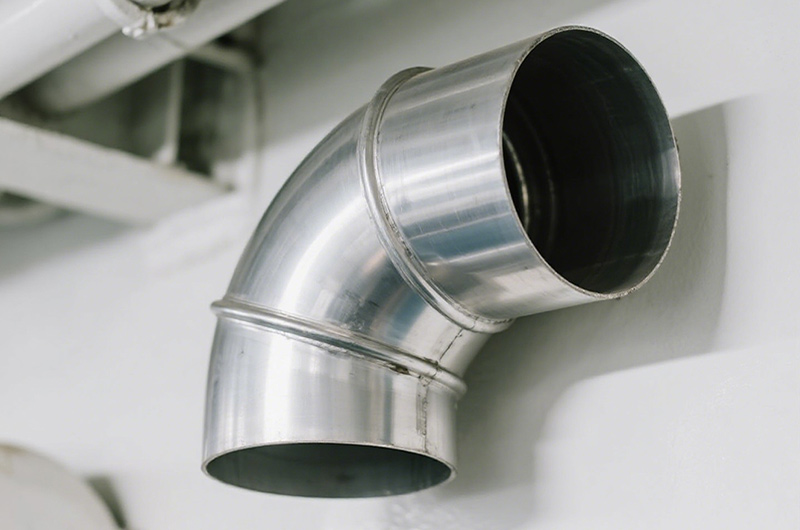
Materials and Characteristics of 45-Degree Aluminum Elbows
Common Materials for Aluminum 45 Degree Elbows
Marine 45-degree aluminum elbows are typically manufactured using the following aluminum alloys:
- 6061 Aluminum Alloy: One of the most commonly used materials, belonging to the Al-Mg-Si series. Produced through heat treatment and pre-stretching processes, it offers good mechanical properties and corrosion resistance.
- 6063 Aluminum Alloy: Compared with 6061, it has slightly lower strength but better corrosion resistance and weldability, making it suitable for applications with high appearance requirements.
- 5083 Aluminum Alloy: An Al-Mg series alloy with high strength and excellent seawater corrosion resistance, making it an ideal material for marine environments.
- 5086 Aluminum Alloy: Another commonly used Al-Mg series alloy, with slightly lower strength than 5083 but good corrosion resistance and weldability, widely used in shipbuilding.
- 1060 Pure Aluminum: Contains more than 99.6% aluminum, offering excellent corrosion resistance and workability, but lower strength, suitable for low-pressure applications.
- 6082 Aluminum Alloy: Belongs to the Al-Mg-Si series and has about 10% higher strength than 6061. It provides good weldability and corrosion resistance, commonly used in marine structures.
Material Property Comparison of Aluminum 45 Degree Elbows
Different aluminum alloys have varying performance in terms of strength, corrosion resistance, workability, and weldability. The table below compares the properties of major marine aluminum alloys:
| Material | Tensile Strength (MPa) | Yield Strength (MPa) | Elongation (%) | Corrosion Resistance | Weldability | Workability | Typical Applications |
| 1060 | 60–95 | 20–35 | 25–40 | Excellent | Excellent | Excellent | Low-pressure piping |
| 6061 | 110–290 | 55–240 | 10–18 | Good | Good | Good | General structural components |
| 6063 | 90–215 | 40–170 | 12–25 | Excellent | Excellent | Excellent | Decorative and appearance parts |
| 6082 | 150–310 | 70–260 | 10–18 | Good | Good | Good | High-strength structural parts |
| 5083 | 270–350 | 110–210 | 12–25 | Excellent | Good | Moderate | Seawater piping, hull structures |
| 5086 | 240–325 | 95–195 | 12–25 | Excellent | Good | Moderate | Ship structures, pressure vessels |
Properties of Aluminum Alloys for 45 Degree Elbows
- Aluminum easily forms a dense aluminum oxide film in air, which can prevent further oxidation and corrosion, giving aluminum excellent corrosion resistance. Especially in neutral and mildly alkaline environments, aluminum exhibits outstanding corrosion resistance. However, in strong acid or strong alkali environments, its corrosion resistance significantly decreases.
- Aluminum alloys have a high strength-to-weight ratio, with good toughness and impact resistance. Proper heat treatment and cold working can further enhance the strength of aluminum alloys.
- Aluminum alloys offer excellent machinability and can be processed into various shapes through extrusion, bending, stamping, and machining. Particularly, 6061 and 6063 aluminum alloys have excellent extrusion and bending properties, making them suitable for manufacturing various complex-shaped pipe fittings.
- Most aluminum alloys can be welded using various welding methods, but their weldability varies by alloy. Al-Mg-Si series alloys (such as 6061, 6063, 6082) offer good crack resistance during welding, and the mechanical properties of the weld joints change minimally after welding.
- Unlike steel, aluminum alloys do not experience brittle transitions in low-temperature environments. In fact, their strength and toughness may even improve, making them ideal for low-temperature applications.
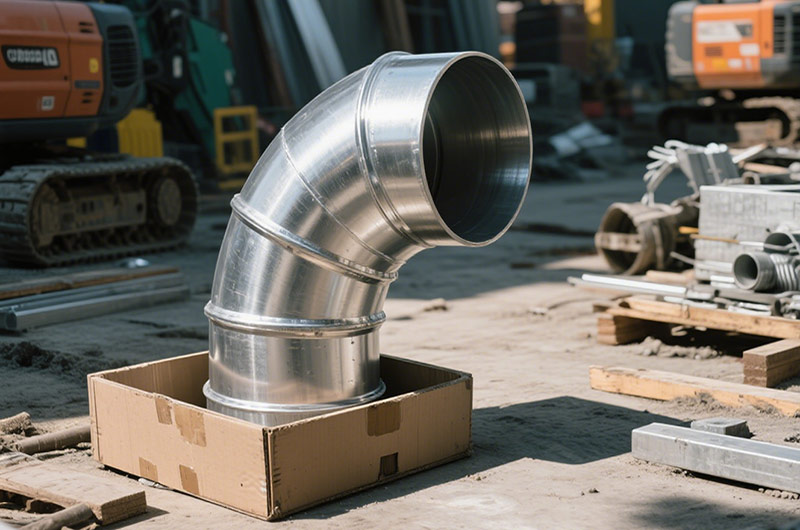
Special Treatments for Marine 45-Degree Aluminum Elbows
To improve the performance of marine 45-degree aluminum elbows in marine environments, the following special treatments are commonly applied:
- Surface oxidation treatment: A thicker and denser oxide film is formed on the aluminum surface through chemical or electrochemical methods to enhance its corrosion and wear resistance.
- Paint protection: Applying anti-corrosion paint on the surface of aluminum elbows can further enhance corrosion resistance. However, it is strictly prohibited to use copper-based, mercury-based, lead-based, or other paints containing high electrochemical potential metal elements on aluminum alloy hulls.
- Anodizing treatment: This is an electrochemical process that creates a thick, hard oxide layer on the aluminum surface, significantly enhancing its corrosion resistance, wear resistance, and decorative appearance.
- Insulation treatment: When connected to other metal parts, insulating gaskets or coatings are typically used to prevent galvanic corrosion between dissimilar metals.
Classification Methods and Characteristics of Marine 45-Degree Aluminum Elbows
Classification by Manufacturing Process
According to different manufacturing processes, marine 45-degree aluminum elbows can be divided into seamless elbows, welded elbows, hot-pushed elbows, cast elbows, and bent elbows. Seamless elbows are made from high-quality aluminum pipes using hot push or cold bend processes, with no welds and high strength and reliability. Welded elbows are made by welding aluminum plates or coils, which are lower in cost but slightly inferior in strength and sealing compared to seamless elbows.
- Seamless elbow: No welds, high strength
- Welded elbow: Low cost, slightly lower strength
- Cast elbow: Complex shapes, small batch production
- Seamless Aluminum 45 Degree Elbow: Made from high-quality aluminum pipe using hot push or cold bend processes, with no welds, offering high strength and reliability. Seamless elbows are suitable for high-pressure, high-temperature, and demanding applications.
- Welded Aluminum 45 Degree Elbow: Made by welding aluminum plate or coil, lower in cost but slightly inferior in strength and sealing. Welded elbows are usually used in low-pressure or non-critical pipeline sections.
- Cast Aluminum 45 Degree Elbow: Formed directly through casting processes, suitable for complex shapes. However, internal defects may exist, requiring strict quality inspections. Cast elbows are typically used for special applications or small-batch production.
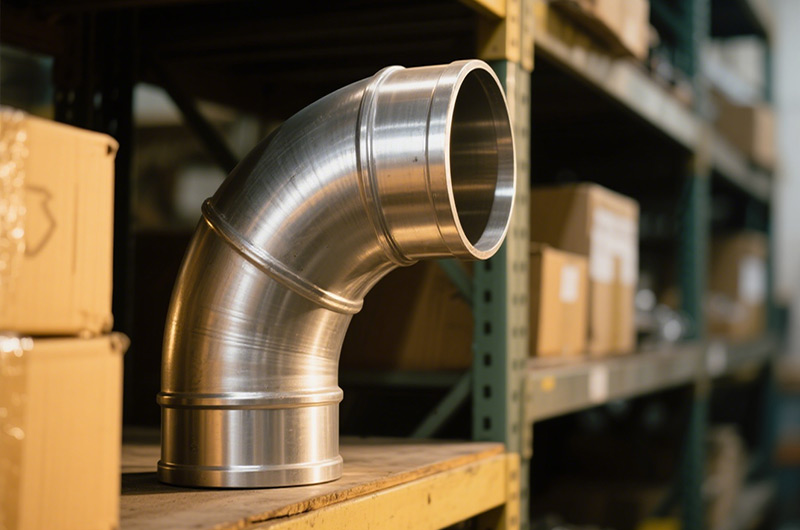
Classification by Connection Method
Marine 45-degree aluminum elbows can be classified by their connection methods with the pipeline: butt-weld elbows, socket-weld elbows, threaded elbows, flanged elbows, and compression elbows. Butt-weld elbows have welding bevels at both ends and are connected to the pipeline by welding, making them the most common connection method. Flanged elbows have flanges that connect to the pipeline via bolts, making installation and removal convenient.
- Butt-weld elbow: Most common connection method
- Socket-weld elbow: For small diameter, low pressure
- Threaded elbow: Easy installation, for low pressure
- Flanged elbow: Easy to disassemble
- Butt-weld 45 Degree Aluminum Elbow: Both ends have welding bevels and are connected to the pipeline by butt welding. It is the most commonly used connection method. Suitable for pipelines under various pressure levels and temperature conditions.
- Socket-weld 45 Degree Aluminum Elbow: One end has a socket and the other an insert, connected to the pipeline through socket welding. Suitable for small-diameter, low-pressure pipelines.
- Threaded 45 Degree Aluminum Elbow: Equipped with internal or external threads, connected to the pipeline by threading. Threaded elbows are easy to install but have limited sealing and pressure capacity, usually used in low-pressure, low-temperature, and non-corrosive media pipelines.
- Flanged 45 Degree Aluminum Elbow: Comes with flanges that are bolted to the flanges on the pipeline. Flanged elbows are easy to install and remove, suitable for pipelines requiring frequent disassembly or maintenance.
Classification by Bending Radius
Marine 45-degree aluminum elbows can be categorized by their bending radius into two main types: long radius elbows and short radius elbows. Long radius elbows have lower pressure loss and less fluid disturbance, suitable for most ship pipeline systems. Short radius elbows take up less space but cause greater pressure loss and fluid disturbance, typically used in space-constrained situations.
- Long radius elbow (EL type): R = 1.5D, most commonly used
- Short radius elbow (ES type): R = 1D, compact
- Extra short radius elbow: R < 1D, less commonly used
Classification by Pressure Rating
Marine 45-degree aluminum elbows can be classified by pressure rating into low pressure, medium pressure, high pressure, and ultra-high pressure elbows. The pressure rating is typically related to wall thickness — the higher the pressure rating, the greater the wall thickness. Common pressure ratings correspond with wall thickness schedules (Sch).
- Low-pressure elbow: ≤1.6 MPa
- Medium-pressure elbow: 1.6–10 MPa
- High-pressure elbow: 10–100 MPa
- Ultra-high-pressure elbow: >100 MPa
| Pressure Rating (MPa) | Wall Thickness Grade (Sch) | Applicable Scenarios |
| ≤1.0 | Sch5s, Sch10s | Low-pressure systems |
| 1.0–2.5 | Sch10, Sch20 | Medium-low pressure systems |
| 2.5–10.0 | Sch30, Sch40, STD | Medium-pressure systems |
| 10.0–16.0 | Sch60, Sch80, XS | High-pressure systems |
| >16.0 | Sch100, Sch120, Sch140, Sch160, XXS | Ultra-high pressure systems |
Processing Methods of Marine 45-Degree Aluminum Elbows
- Extrusion Forming Process Extrusion is one of the primary methods for manufacturing marine 45-degree aluminum elbows, especially for seamless elbows. The extrusion process typically includes billet preparation, heating, extrusion, cooling, and post-processing. The advantages of the extrusion process are high production efficiency, stable product quality, dense internal structure, and suitability for mass production of aluminum elbows in various specifications.
- Bending Forming Process Bending is another commonly used method for processing aluminum elbows, mainly for manufacturing large-diameter or specially curved elbows. Bending processes include cold bending, hot bending, mandrel bending, non-mandrel bending, and roll bending. The advantage of bending forming is its capability to produce elbows with various bending radii, especially suitable for large-diameter elbows.
- Welding Forming Process Welding is the primary method for manufacturing seamed aluminum elbows and is suitable for large-diameter, non-standard, or specially shaped elbows. The welding process usually includes blanking, forming, welding, and post-treatment. Its advantages are high flexibility and the ability to manufacture various complex shapes and large-diameter elbows.
- Casting Forming Process Casting is a traditional method used to manufacture complex or specially designed aluminum elbows. The casting process typically includes mold making, smelting, pouring, cooling, demolding, and post-processing. The advantage of casting is the ability to produce complex shapes, ideal for small batch production or special requirements.
- Machining Process Machining is an important method for manufacturing high-precision or specially required marine 45-degree aluminum elbows, especially for small batches, high precision, or special materials. Machining typically includes CNC machining, turning, grinding, and EDM. Its advantages include high precision and excellent product quality.
- Special Processing Methods In addition to the main processes mentioned above, there are also special processing methods for manufacturing marine 45-degree aluminum elbows, such as spinning, explosive forming, 3D printing, and composite processing. These special techniques are suitable for specific production demands and technical requirements.
Corrosion Resistance of Marine 45-Degree Aluminum Elbows
- Corrosion Characteristics of Aluminum Alloys in Marine Environments The marine environment is a complex corrosive environment containing high salinity, humidity, temperature changes, and biological fouling. The main corrosion forms of marine 45-degree aluminum elbows include pitting, galvanic corrosion, crevice corrosion, intergranular corrosion, stress corrosion cracking, and microbiologically influenced corrosion.
- Corrosion Resistance Comparison of Different Aluminum Alloys Different aluminum alloys have significantly different corrosion resistance in marine environments. Pure aluminum has excellent corrosion resistance, especially in neutral and mildly alkaline conditions. Al-Mg alloys (e.g., 5083, 5086) have outstanding seawater corrosion resistance, especially against pitting and stress corrosion cracking. Al-Mg-Si alloys (e.g., 6061, 6063) have slightly lower resistance but still perform well in seawater.
- Factors Affecting Corrosion Resistance of Marine Aluminum Elbows The corrosion resistance of marine 45-degree aluminum elbows is influenced by various factors, including seawater temperature, salinity, pH value, dissolved oxygen, flow rate, biological factors, stress state, surface condition, contact with other metals, and protective measures.
- Measures to Improve Corrosion Resistance To improve corrosion resistance of marine 45-degree aluminum elbows in marine environments, measures include proper material selection, surface treatment, structural design optimization, protective technologies, process control, and maintenance management. For example, selecting corrosion-resistant aluminum alloys, applying anodizing, using cathodic protection, and avoiding direct contact with dissimilar metals.
Applications of Marine 45-Degree Aluminum Elbows in the Maritime Field
Applications in Ship Piping Systems
Marine 45-degree aluminum elbows are widely used in various piping systems on ships, including seawater cooling systems, ballast water systems, fire protection systems, bilge systems, freshwater systems, ventilation systems, compressed air systems, and hydraulic systems. In these systems, aluminum elbows are used to change the direction of fluid flow and ensure normal operation.
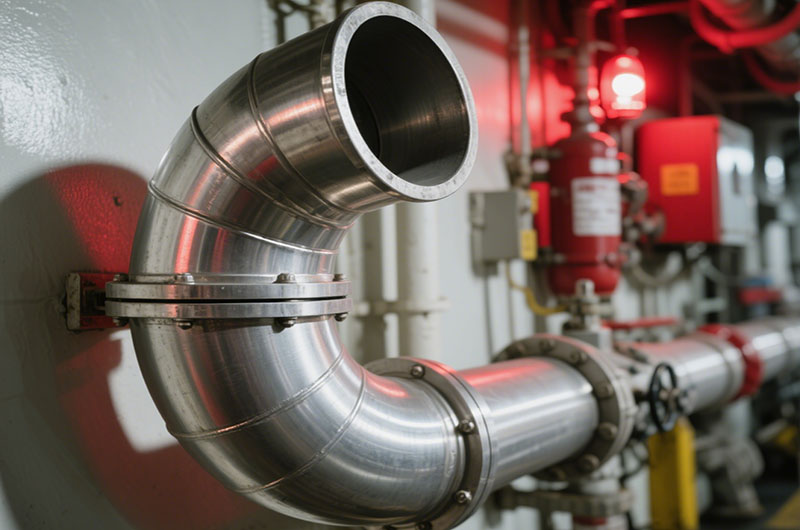
Specific Applications in Different Ship Areas
Marine 45-degree aluminum elbows are used in different parts of ships for different functions. In the engine room, they are mainly used in cooling systems, fuel systems, and lubrication systems; in cargo holds, mainly in ballast and ventilation systems; on the deck, in ventilation and fire systems; in living areas, in freshwater and air conditioning systems; and in the bow and stern, in anchoring and propulsion systems.
Applications in Special Ships and Environments
Beyond conventional ships, marine 45-degree aluminum elbows are also crucial in high-speed vessels, offshore engineering ships, polar vessels, offshore and inland waterway vessels, yachts, leisure boats, and military ships. For use in special environments, elbows typically require specific design and treatment based on environmental characteristics.
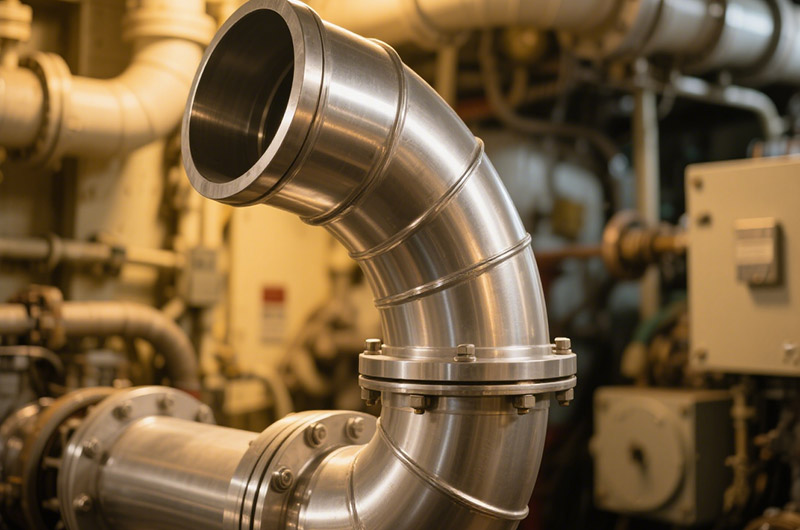
Other Application Fields of Aluminum 45 Degree Elbow
The lightweight, corrosion-resistant, and processing adaptability of 45-degree aluminum elbows allow their extensive application beyond ships, including in the chemical, energy, transportation, and construction industries.
| Application Field | Typical Uses | Advantages |
| Marine and Shipbuilding | Engine Cooling Systems | Salt spray corrosion resistance |
| Seawater Transfer Systems | Lightweight, reduces hull burden | |
| Ventilation/Exhaust Systems | Certified by classification societies | |
| Automotive Manufacturing & Modification | Exhaust Elbows | Lightweight design reduces fuel consumption |
| Intake Pipe Connections | Good thermal conductivity | |
| Cooling Pipe Bends | Flexible installation | |
| Aerospace Engineering | Aircraft Liquid Pipeline Transitions | High strength, lightweight |
| Ground Test Equipment Pipe Connections | Corrosion resistance | |
| Reduces structural load of aircraft | ||
| Industrial Equipment & Automation | Hydraulic/Pneumatic Piping Systems | Quick installation |
| Robot or Conveyor System Elbow Joints | Strong corrosion resistance | |
| Enhances system layout flexibility | ||
| HVAC and Refrigeration Systems | Condenser and Evaporator Connection Pipes | Fast heat conduction |
| Air Conditioning Pipe Elbow Connections | Excellent oxidation resistance | |
| Refrigerant Circulation Systems | Labor-saving installation | |
| Building Structure Systems | Building Ventilation Ducts | Aesthetic appearance |
| Drainage System Bends | Easy to process and form | |
| Curtain Wall Exhaust or Decorative Components | Lightweight structure with strong weather resistance | |
| Agriculture and Irrigation Systems | Sprinkler System Aluminum Elbows | Excellent corrosion resistance |
| Greenhouse Pipe Connections | Easy installation | |
| Fertilizer Transfer Pipe Connections | Suitable for corrosive liquids | |
| Energy and Power Facilities | Solar Panel Cooling Water Pipe Systems | Corrosion-resistant and non-magnetic |
| Wind Power Cooling or Ventilation Systems | Good thermal conductivity | |
| Power Station Cable Cooling System Elbow Connections | Suitable for complex installation environments |
Material Selection Recommendations for Aluminum Elbows in Different Fields
| Application Field | Recommended Material | Core Advantages |
| Chemical/Pharmaceutical | 1060 Pure Aluminum | High purity, chemical corrosion resistance |
| Transportation/Tankers | 6061-T6 | High strength, weldable, fatigue resistant |
| Food Processing | Polished 1060/3003 | Smooth surface, non-toxic |
| Pneumatic/Light Hydraulic Systems | 6063 | Easy to extrude, low cost |
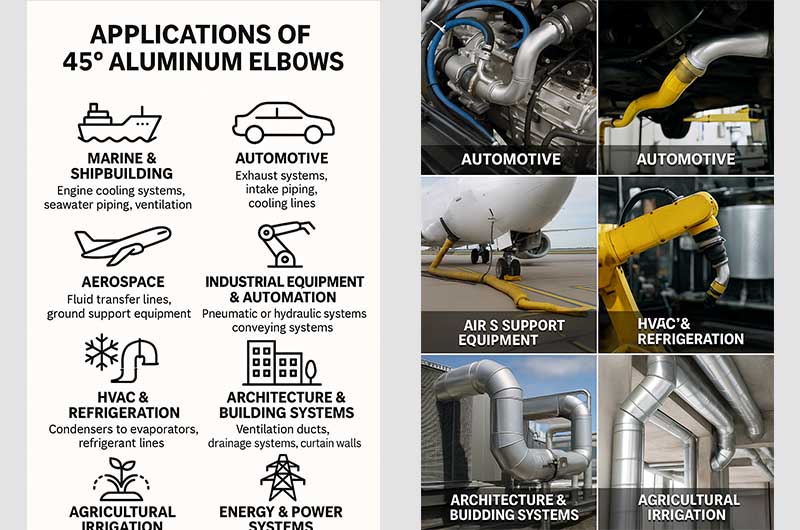
Comparative Advantages of Marine Aluminum Elbows vs. Other Materials
Compared with elbows made of other materials, 45-degree marine aluminum elbows offer significant advantages such as light weight, excellent corrosion resistance, good thermal conductivity, good machinability, excellent weldability, good performance at low temperatures, non-magnetic properties, high recycling value, aesthetic appearance, and ease of installation. These benefits make aluminum elbows widely used in marine piping systems.
Selection Guide for 45-Degree Marine Aluminum Elbows
- Select According to Usage Environment: When selecting 45-degree marine aluminum elbows, the first consideration should be the operating environment, including medium characteristics, environmental conditions, and installation location. For example, for highly corrosive media, aluminum alloys with excellent corrosion resistance should be selected; for areas with high vibration, materials with higher strength and fatigue resistance should be used.
- Select Based on Technical Specifications: When choosing 45-degree marine aluminum elbows, it is necessary to determine technical specifications such as nominal diameter, outer diameter, wall thickness, bend radius, pressure rating, connection type, and material. These parameters help select the appropriate elbow specifications and models to ensure system compatibility.
- Select Based on Ship Type and Purpose: Different ship types and purposes require different performance from 45-degree aluminum elbows. For example, commercial vessels often choose cost-effective aluminum alloys; fishing boats require highly corrosion-resistant materials; yachts demand aesthetics and comfort; engineering vessels emphasize reliability and durability; military ships demand extremely lightweight, high strength, and reliable materials.
- Key Considerations in Selecting Marine Aluminum Elbows: When selecting 45-degree marine aluminum elbows, attention should also be paid to certifications and standards, quality control, compatibility, cost-effectiveness, after-sales service, environmental requirements, fire protection standards, ease of maintenance, availability of spare parts, and installation requirements. Ensure that the selected elbows meet relevant standards and specifications and fulfill actual operational needs.
Maintenance Methods and Precautions for 45-Degree Marine Aluminum Elbows
- Routine Maintenance Checks: Routine maintenance of 45-degree marine aluminum elbows is essential for safe and reliable operation. This includes regular inspections of appearance, corrosion, connections, deformation, vibration, temperature, pressure, leakage, labeling, and record keeping.
- Cleaning and Corrosion Protection: Regularly clean surface dirt, dust, salt crystallization, and biological fouling from elbows to maintain a clean surface. For elbows used over a long period, especially those transporting media prone to sediment or scaling, internal cleaning should be performed regularly. At the same time, check the status of corrosion protection treatments, such as surface coatings or anodic films, and repair any damage promptly.
- Handling Common Issues: During use, 45-degree marine aluminum elbows may encounter problems such as corrosion, leakage, or deformation. Minor corrosion can be treated locally or with surface treatment; severe corrosion or damage requires timely replacement. In case of leakage, inspect the sealing of connection parts and replace gaskets or reconnect as necessary.
- Precautions for Long-Term Storage: If 45-degree marine aluminum elbows need to be stored for long periods, choose a dry, well-ventilated environment free of corrosive gases. Prior to storage, clean and apply corrosion protection to ensure the surface is dry and free of contaminants and corrosion products. Avoid heavy loads or impacts that may cause deformation or damage.
Recommended for you
-
Our marine-grade 90-degree aluminum elbow products are certified by multiple international classification societies (DNV/ABS/CCS/BV), ensuring compliance with the stringent requirements of shipbuilding and marine engineering.
-
As a trusted aluminum fittings supplier, HC Aluminum offers a wide range of 4 Aluminum Elbow options in mainstream specifications, commonly including 45°, 90°, and 180°.
